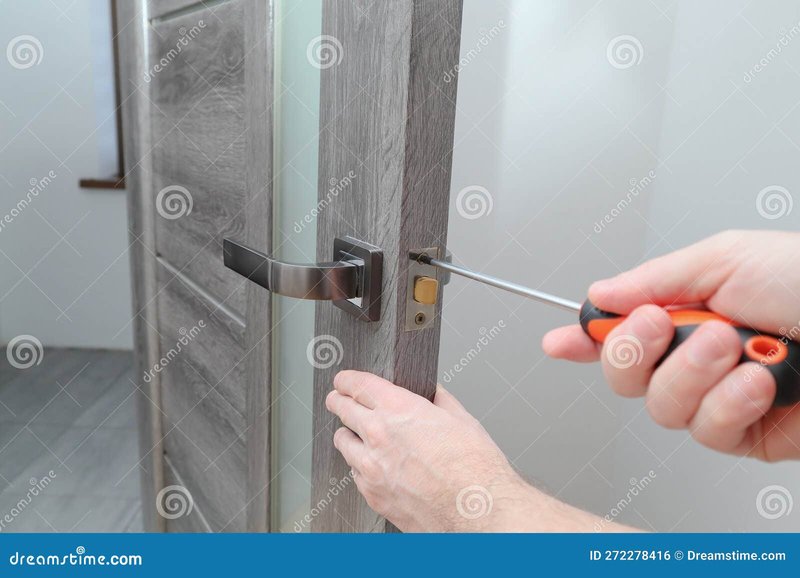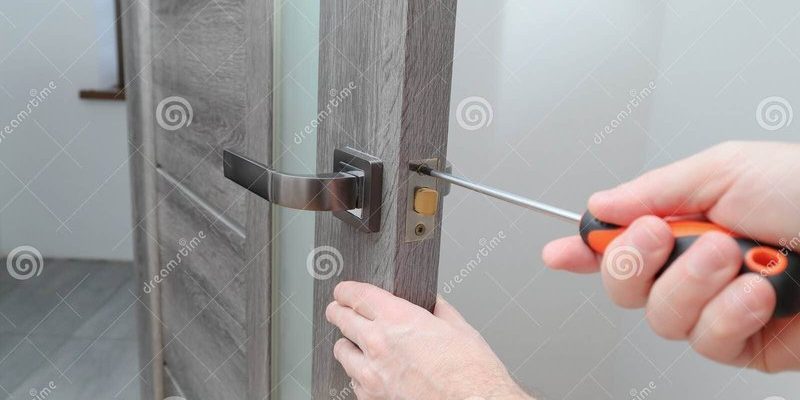
In this article, we’ll delve into what happens when interior door hardware encounters harsh cleaners, how to assess the damage, and simple steps to help you restore it. We’ll tackle common issues you might face, whether it’s a tarnished finish on a brass doorknob or stiff hinges that refuse to budge. Just like learning to care for a cherished item, understanding how to repair your door hardware can save you from unnecessary replacements and keep your home looking sharp.
Understanding the Impact of Harsh Cleaners on Door Hardware
When you think of door hardware, you might picture the doorknobs, hinges, or locks that contribute to the overall functionality of your home. But did you know that these components are often made from a variety of materials, like brass, stainless steel, or even plastic? Each material reacts differently to harsh cleaners. For instance, brass can tarnish and discolor, while stainless steel might develop unsightly spots.
Harsh cleaners typically contain chemicals that break down grime but can also strip away protective coatings. This leaves the underlying metal vulnerable to corrosion. For example, if your doorknobs are exposed to bleach, you might notice a fading finish or even rust forming over time. Here’s the thing: understanding the specific material of your door hardware is crucial. Knowing what you’re dealing with helps you select the right cleaning and repair strategies.
Assessing the Damage to Your Door Hardware
Once you realize your door hardware has been affected, the first step is to assess the damage. Start by inspecting each piece carefully. Look for signs of discoloration, rust, or sticky residue. You might be wondering, “How do I know if my hardware is salvageable?” Look carefully at the finish. If the surface seems rough or there are patches of corrosion, it may need more than just a good cleaning.
Use a clean, damp cloth to wipe down the hardware. This helps remove any surface grime or residue. If the hardware is still sticky or shows signs of wear, it’s a good indication that it needs some TLC. You may also want to check the hinges for stiffness. If they’re not moving smoothly, there could be built-up grime or rust causing the issue.
Cleaning Your Door Hardware Safely
Before jumping into repairs, it’s important to clean your door hardware properly. Instead of reaching for those harsh chemicals again, consider gentler cleaning solutions. A mixture of warm water and mild dish soap can work wonders.
1. Gather your materials:
– Warm water
– Mild dish soap
– Soft cloth or sponge
– Old toothbrush (for hard-to-reach areas)
2. Create your cleaning solution: In a bowl, mix a few drops of dish soap with warm water until bubbly.
3. Wipe down the hardware: Dip the soft cloth or sponge into the solution, wring it out, and gently wipe the door hardware.
4. Use the toothbrush: For hinges and other intricate parts, use an old toothbrush to scrub away dirt.
5. Rinse and dry: Finish by wiping the hardware with a clean, damp cloth and then thoroughly dry it.
This gentle approach cleans effectively without damaging the finish.
Restoring the Finish of Your Door Hardware
After cleaning, you might still notice discoloration or a worn finish on your door hardware. Don’t worry; there are ways to restore it. For brass hardware, a brass polish can help bring back its shine. Here’s how:
1. Choose the right polish: Look for a product specifically designed for brass.
2. Apply the polish: Using a soft cloth, rub a small amount of the polish onto the hardware in a circular motion.
3. Buff and shine: Allow the polish to sit for a few minutes, then buff it with a clean cloth. You should see a noticeable difference in color and shine.
For stainless steel, consider using a stainless steel cleaner, which can help remove stains and restore luster. Just follow the product instructions for the best results.
Lubricating Hinges and Moving Parts
If your door hinges feel stiff after exposure to harsh cleaners, they likely need lubrication. This is essential for smooth operation and preventing further damage. Here’s a quick guide to lubricating your door hardware:
1. Choose your lubricant: Look for a silicone-based spray or a light machine oil. Avoid heavy greases, as they can attract dirt.
2. Apply the lubricant: Spray or apply a small amount to each hinge. You don’t need a lot—just enough to cover the moving parts.
3. Move the door: Open and close the door several times to help distribute the lubricant evenly.
4. Wipe off excess: Use a clean cloth to remove any drips or excess lubricant to prevent it from attracting dust.
Keeping your hinges lubricated will help prolong their life and keep your doors operating smoothly.
Protecting Your Door Hardware in the Future
To prevent damage to your door hardware in the future, consider these protective measures. First, always opt for mild cleaners. If you need to use harsher cleaners in your home, be cautious around your doors. When cleaning, keep the area dry and avoid overspray.
You might also want to invest in protective covers for doorknobs or handles. These can help shield the hardware from corrosive agents. Additionally, routine maintenance—like cleaning and lubricating—can help catch early signs of wear before they become major issues.
Remember: Being proactive is key to maintaining the integrity of your door hardware.
Replacing Damaged Hardware
If your door hardware has suffered serious damage and restoration isn’t enough, replacement might be necessary. It’s essential to choose the right replacement hardware that matches the style and function of the original. Here’s how to proceed:
1. Identify the type of hardware: Know whether you need a doorknob, handle, or hinge.
2. Choose the right finish: Match the existing finish as closely as possible to maintain consistency in your home’s aesthetic.
3. Install carefully: Follow the manufacturer’s instructions or consider hiring a professional if you’re unsure about the installation process.
Replacing hardware might involve some upfront cost, but it can be worth it in the long run for both function and appearance.
In conclusion, addressing the impacts of harsh cleaners on your interior door hardware doesn’t have to be daunting. With careful cleaning, restoration, and future prevention measures, you can keep your doors functioning beautifully. Whether you’re polishing doorknobs or lubricating hinges, a little effort goes a long way. Remember, your home deserves to shine—so give your door hardware the care it needs!
